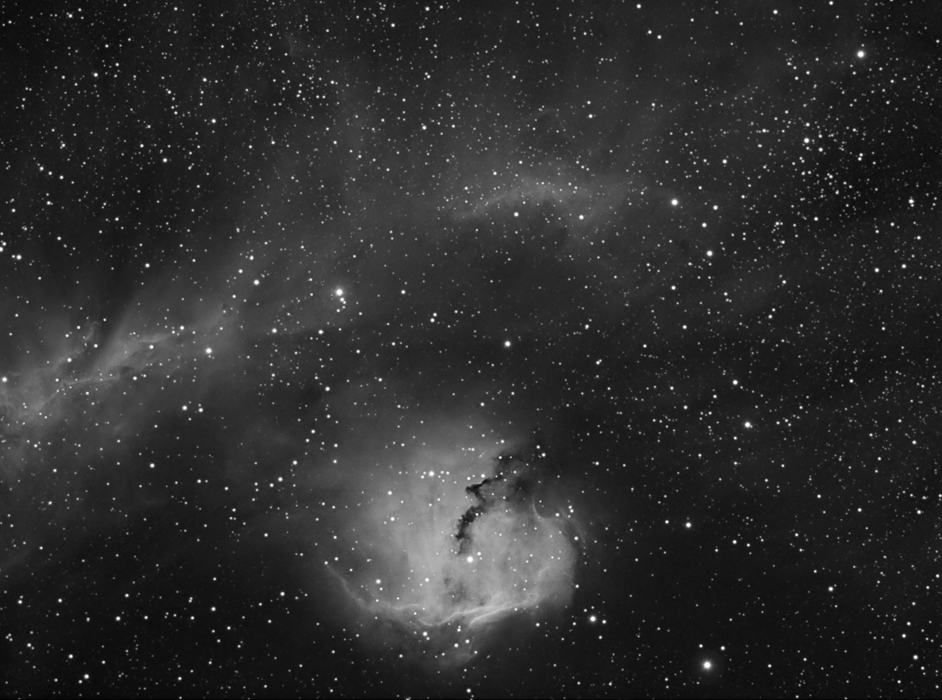IC 2177 (Gum 1) in Hydrogen Alpha
Characteristics:
Magnitude: ?
Size: 20' x 20'.
Distance: ?
RA: 7h 05m 20.2s
Dec: minus 10 degrees 42' 20"
Description:
IC 2177 is a region of hydrogen alpha emission located in the
constellation Monoceros (the Unicorn). It is shown as the bright,
roughly circular region in the lower portion of the image, with a
central vein of dark dust coursing through it. IC 2177 is
associated with a broad expanse of nebulosity that extends far beyond
this FOV, and is shown best in this color image
from Rob Gendler, which nicely illustrates why this object is sometimes
referred to as the Seagull Nebula. I chose to orient this image
so that the "seagull" is on its head, which is not conventional but
nevertheless presents an interesting perspective on this object.
In the upper right hand portion of my image is the open star cluster
NGC 2335. IC 2177 would not normally be a challenging target,
but at my imaging site, its highest elevation is only 37 degrees.
Despite the "soft" seeing at this elevation, as well as my image scale
of only 3.26 arcsec/pixel, there is still a good amount of detail that
can be observed in this image. Please view the higher
magnification image here.
Photographic Details:
Date: March 5, 2005
Scope: Takahashi
Sky 90 at f4.5 with field flattener/focal reducer, on the G11 Losmandy
Mount.
Autoguider: SBIG STV with
e-finder.
Camera: SXV-H9
Filter: Astronomik
Ha filter (13 nm bandpass).
Exposures: 27 x 5' each, binned
1 x 1, 2.25 hours total.
Conditions: Temperature 28 degrees F; average
transparency; poor seeing; intermittent mild breeze.
Post-processing: No dark, bias, or flat frames used. Auto aligned
in
MaximDL; Sigma combined using RC Sigma Reject plug in, followed by DDP
in ImagesPlus (IP). Subsequent
levels and curves adjustments in Photoshop CS (16 bit format).
Final sharpening using a combination of high pass filtering and
Lucy-Richardson deconvolution techniques.
Please
note: Graphics on this website
may not be reproduced without author permission.
Back to Nebulae
Home
